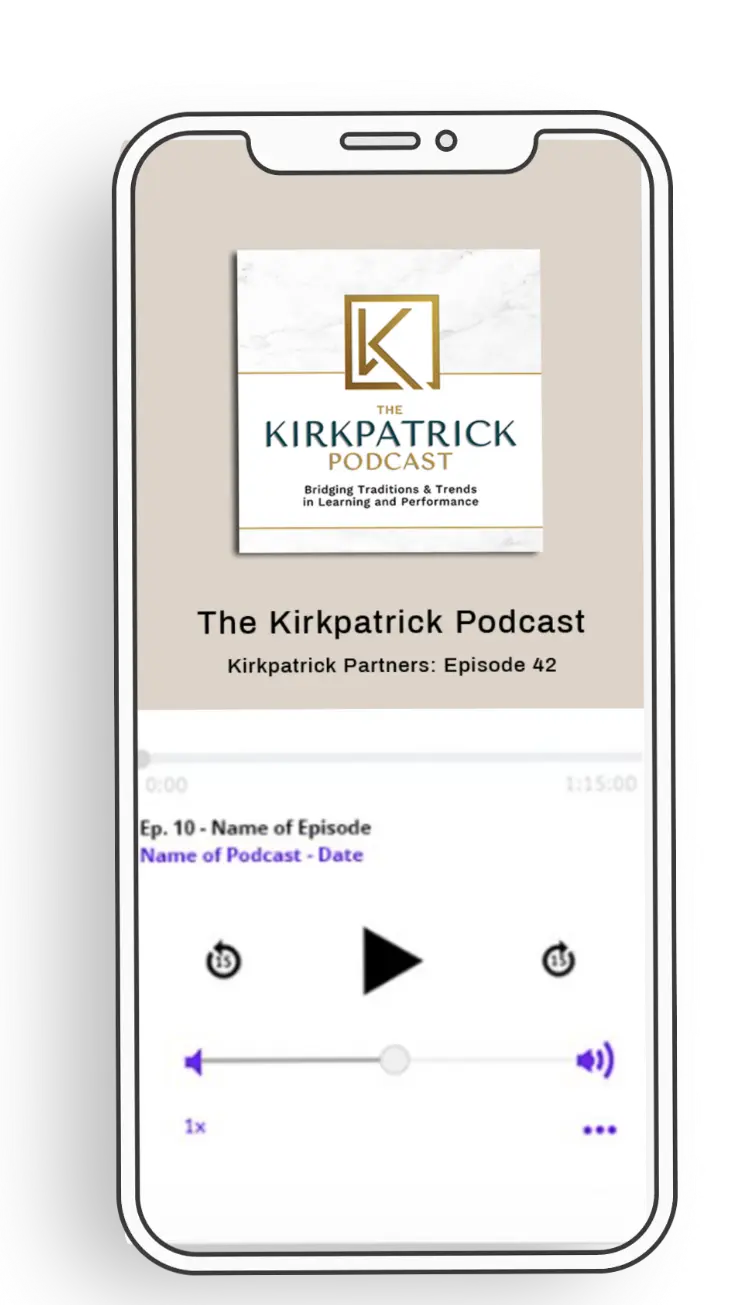Level 1 Learning Evaluations: Useless or Misused?

There’s a lot of talk in the Learning & Development world about how Level 1 evaluations (or smile sheets as often referred to in the Kirkpatrick Model world) are often considered “worthless.” Many claim they don’t measure real impact—only whether people liked the training.
But here’s the problem: we’ve misunderstood their purpose.
Why Level 1 Still Matters
Despite the criticism, Level 1 evaluations—often called “reaction evaluations”—still play a crucial role in the Kirkpatrick Four Levels® of Evaluation. When done correctly, they can provide early insights into the learner experience, which can directly influence training success.
Experience Affects Learning
If a program is poorly designed, lacks engagement, or includes culturally irrelevant content, it will impact learning transfer. For example, if a training session includes complex language that confuses participants or cultural references that are irrelevant to the audience, learners may disengage, reducing the effectiveness of training. By using Level 1 evaluations, you can capture reactions related to engagement, clarity, and content relevance, allowing you to address these issues proactively. Analyzing feedback about the learning environment, facilitation style, and materials used can help you make data-driven improvements before the next session.
Surveys Provide Early Warning Signs
Learner feedback can reveal misalignment before it turns into a bigger problem. For instance, if several participants report that the course content was not aligned with their job roles, it signals a potential gap in training needs analysis. Identifying this early on can prompt a deeper look at training objectives versus learner expectations. Similarly, if a majority of participants express that a particular module was confusing or too advanced, it indicates the need for content restructuring. Level 1 evaluations can help identify these warning signs, allowing for timely adjustments that improve training effectiveness.
Data Helps Us Improve
When properly used, reaction surveys can help refine course design, adjust facilitation, and increase training relevance. Instead of dismissing them as useless, we should view Level 1 evaluations as the foundation for measuring learning effectiveness. For example, if feedback consistently indicates that interactive elements are the most engaging, you can increase their frequency. If learners rate certain topics as less relevant, consider either eliminating or updating those sections. By consistently analyzing Level 1 data, you build a continuous improvement cycle that enhances both the learner experience and the training outcomes.
Where We Go Wrong
Level 1 evaluations often get a bad reputation not because of the concept itself but because of how they’re executed. Common mistakes include:
Asking too many questions
Surveys become overwhelming when filled with questions that focus more on the facilitator than on the learner’s experience. When the survey is lengthy or repetitive, learners may rush through it, providing less thoughtful responses. Additionally, questions that overly focus on the facilitator’s style rather than the training content itself can lead to skewed results. To make evaluations meaningful, focus on a balanced set of questions that address relevance, engagement, and perceived value, rather than personal preferences or trivial details.
Collecting data that never gets analyzed or acted upon
Gathering reactions without a plan for using them is a wasted effort. Too often, organizations gather extensive feedback but lack a structured process for analyzing and implementing changes. This not only wastes resources but also disengages learners who feel their opinions are ignored. To avoid this pitfall, ensure that you have a plan for both analyzing and applying the insights you collect. Communicate your intention to learners so they understand that their feedback will lead to tangible improvements.
Treating Level 1 as the only evaluation
The Kirkpatrick Model emphasizes that Level 1 is just the starting point for execution NOT planning. To truly understand the impact of training, you need to start the planning process at Level 4 working backwards to design the right solution. The model is not meant to buidl on each other, therefore starting at 1 in hopes to find Results at Level 4 will lead you down the wrong path. Focusing solely on whether participants enjoyed the training does not provide insight into whether they actually learned, applied, or saw results from it. Use Level 1 data as an initial indicator, but integrate it with subsequent evaluations to build a comprehensive picture of measuring training effectiveness.
How to Make Level 1 Evaluations Work for You
Cut your surveys in half
Focus on relevance, engagement, and key takeaways to avoid overwhelming learners and collecting unmanageable data. Prioritize questions that directly link to the learning objectives and the desired outcomes. For instance, instead of asking multiple questions about presentation style, include questions like, “How relevant was the content to your current role?” and “Which part of the training did you find most engaging?” By reducing survey length, you increase the likelihood of receiving thoughtful, accurate responses.
Only collect data that you plan to act on
Before designing a survey, consider how you will use the responses. Avoid questions that gather data just for the sake of it. Instead, focus on questions whose answers will directly influence decisions or improvements. For example, if you are unsure whether an interactive activity added value, ask specifically about it. Avoid vague or overly general questions that don’t provide actionable insights. Having a clear purpose for each question ensures that you gather data that can directly impact training effectiveness.
Close the feedback loop
If you make changes based on feedback, let learners know! Demonstrating that their input leads to improvements boosts engagement and encourages honest, thoughtful responses. For example, after analyzing Level 1 feedback, if you adjust the length of sessions based on complaints about them being too long, communicate this in the next training. This transparent approach builds trust and shows that you value participants’ experiences, fostering a culture of continuous improvement.
So instead of abandoning Level 1, let’s use it better. When done right, it provides valuable insights that contribute to stronger learning experiences and better outcomes.
How are you using Level 1 in your evaluations? Let’s discuss in the comments!
Want to learn more? Listen to our full podcast episode.





